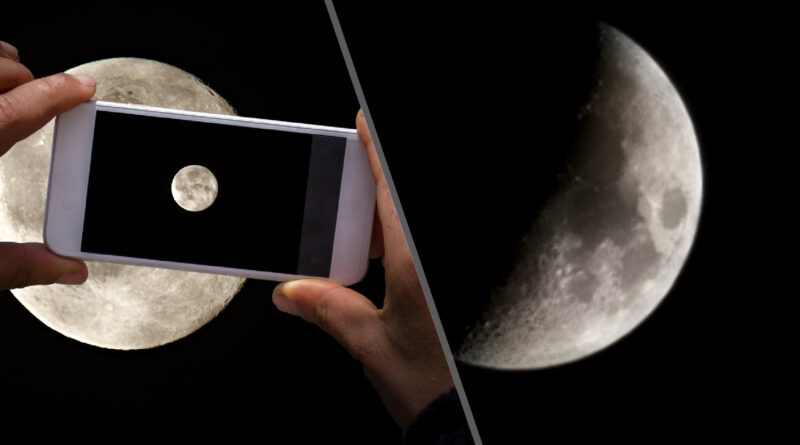I took pictures of the moon with 3 phones. This one had the best shot.
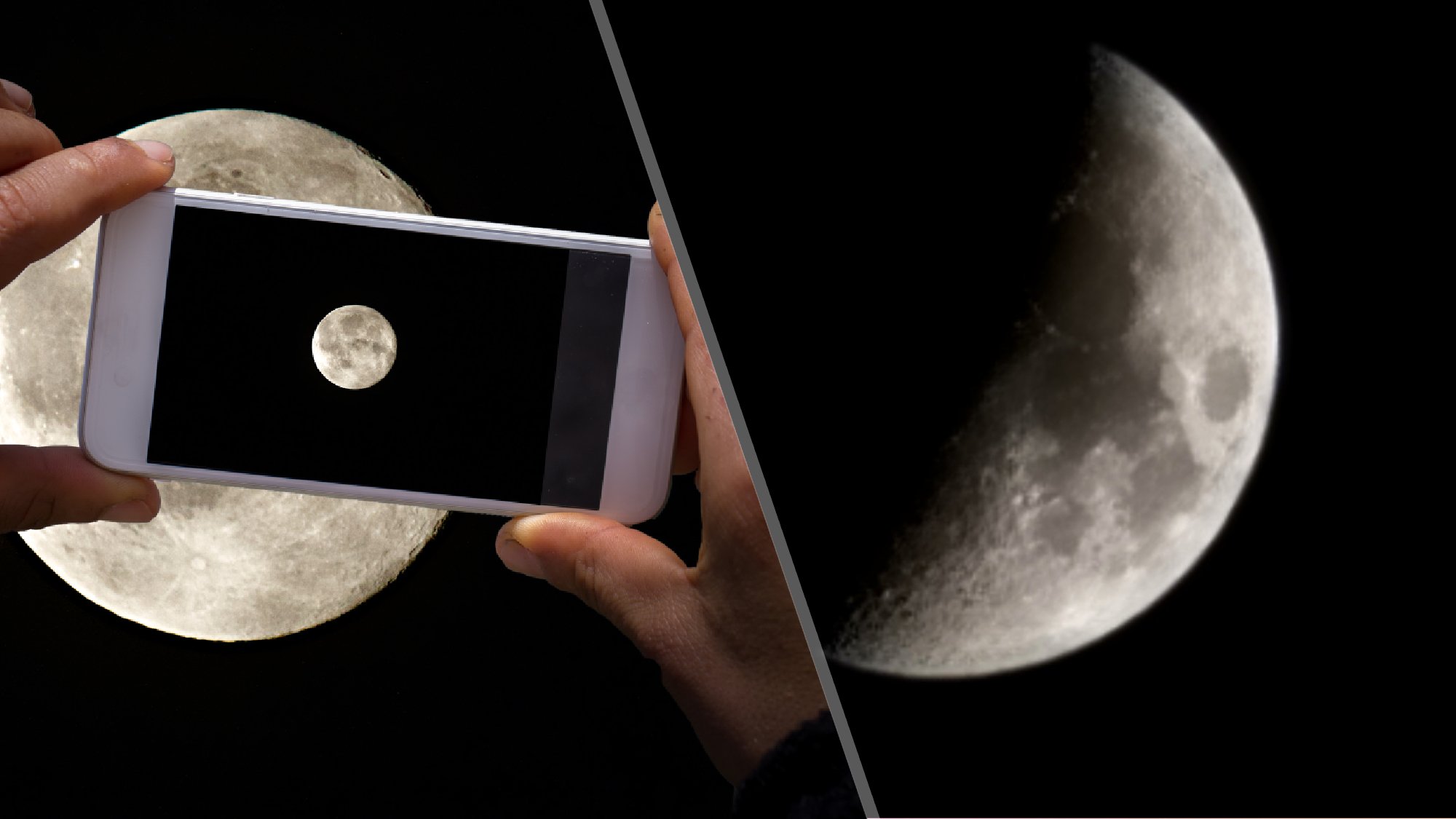
As someone fascinated by celestial wonders, I decided to take pictures of the moon with the iPhone 15 Pro Max. Then I thought, “Wait a minute; I have two other phones. Could they possibly beat the iPhone 15 Pro Max in astrophotography?”
That’s when I whipped out the Google Pixel 8 Pro and the Samsung Galaxy S22 Ultra. Let’s see how all three devices performed.
Which phase was the moon in when I took the pictures?
When I snapped pictures of the moon on a Sunday night, the spherical rocky body was in its waning crescent phase. At the time, the moon was about 40% illuminated.
How did I take pictures of the moon?
For all three phones — the iPhone 15 Pro Max, Google Pixel 8 Pro, and the Samsung Galaxy S22 Ultra — I did the following three steps:
-
I thoroughly cleaned the lenses with a microfiber cloth.
-
I used digital zoom to get a close shot of the moon, but chose a “sweet spot” that made the picture as clear as possible. In some cases, this meant not zooming in too close because the celestial body would lose too much detail.
-
I reduced the exposure. The moon is a radiant stellar beauty, so it’s imperative that you reduce the sensor’s sensitivity to light. Otherwise, the moon will end up looking like a glowy white blob.
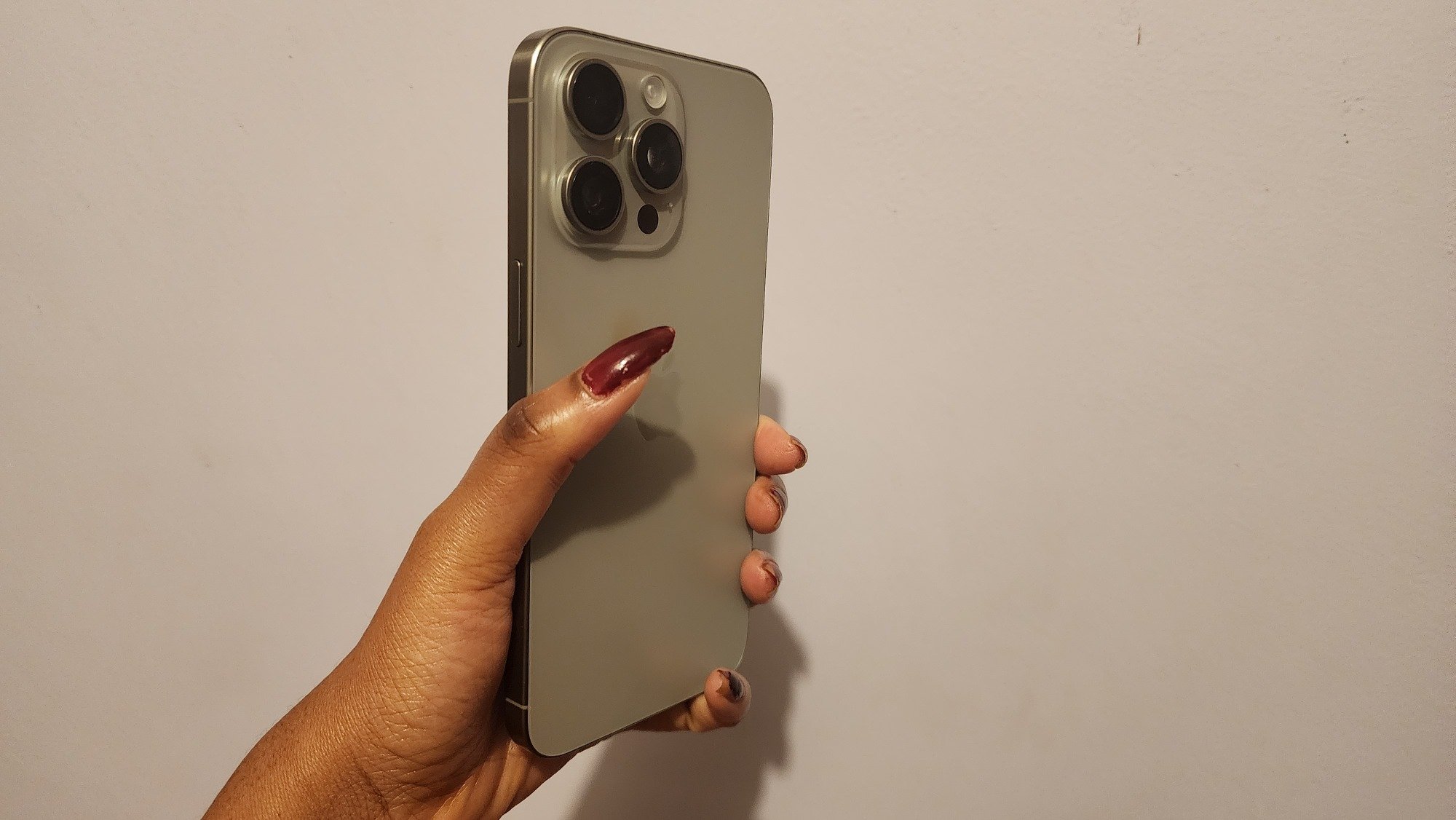
Google Pixel 8 Pro
Here is the best photo of the moon from the Google Pixel 8 Pro, and quite frankly, it’s the only good take out of the seven I took.
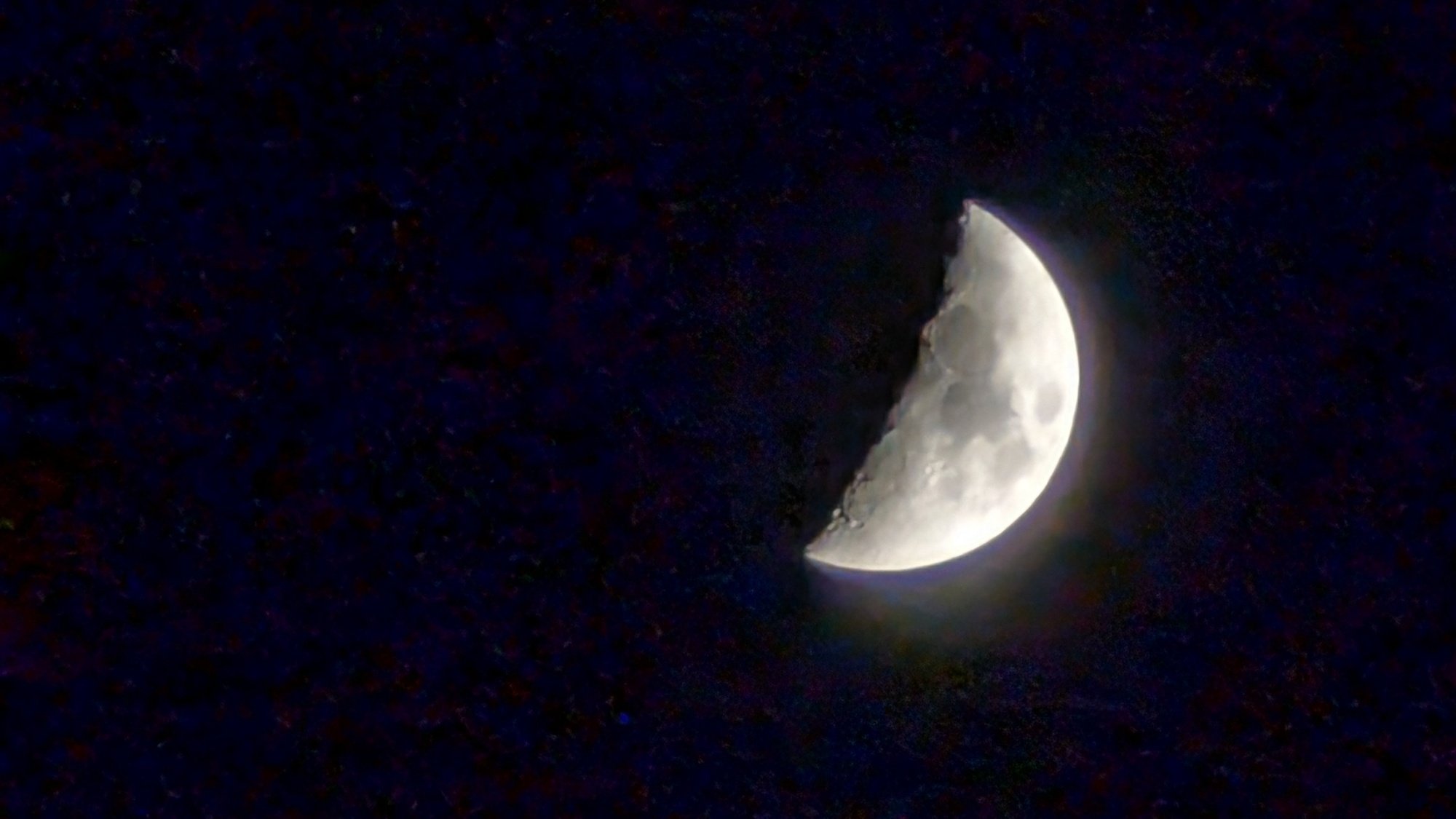
I was lucky enough that the zoom seemed to focus perfectly for a split second, detailing the striking craters that adorned the moon, so I quickly took the shot. The Pixel 8 Pro has a “Super Res Zoom” feature that lets you zoom up to 30x, but I stopped at 25x for this shot.
Google Pixel 8 Pro quick camera specs:
Main camera: 50MP, f/1.7, 1.2µm
Telephoto (facilitates zooming in): 48MP, f/2.8, 0.7µm, 5x optical zoom
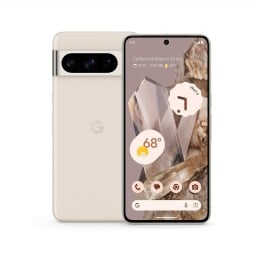
iPhone 15 Pro Max
Surprisingly, the iPhone 15 Pro Max was the most challenging of the three phones. Unfortunately, this was my best take with the device.
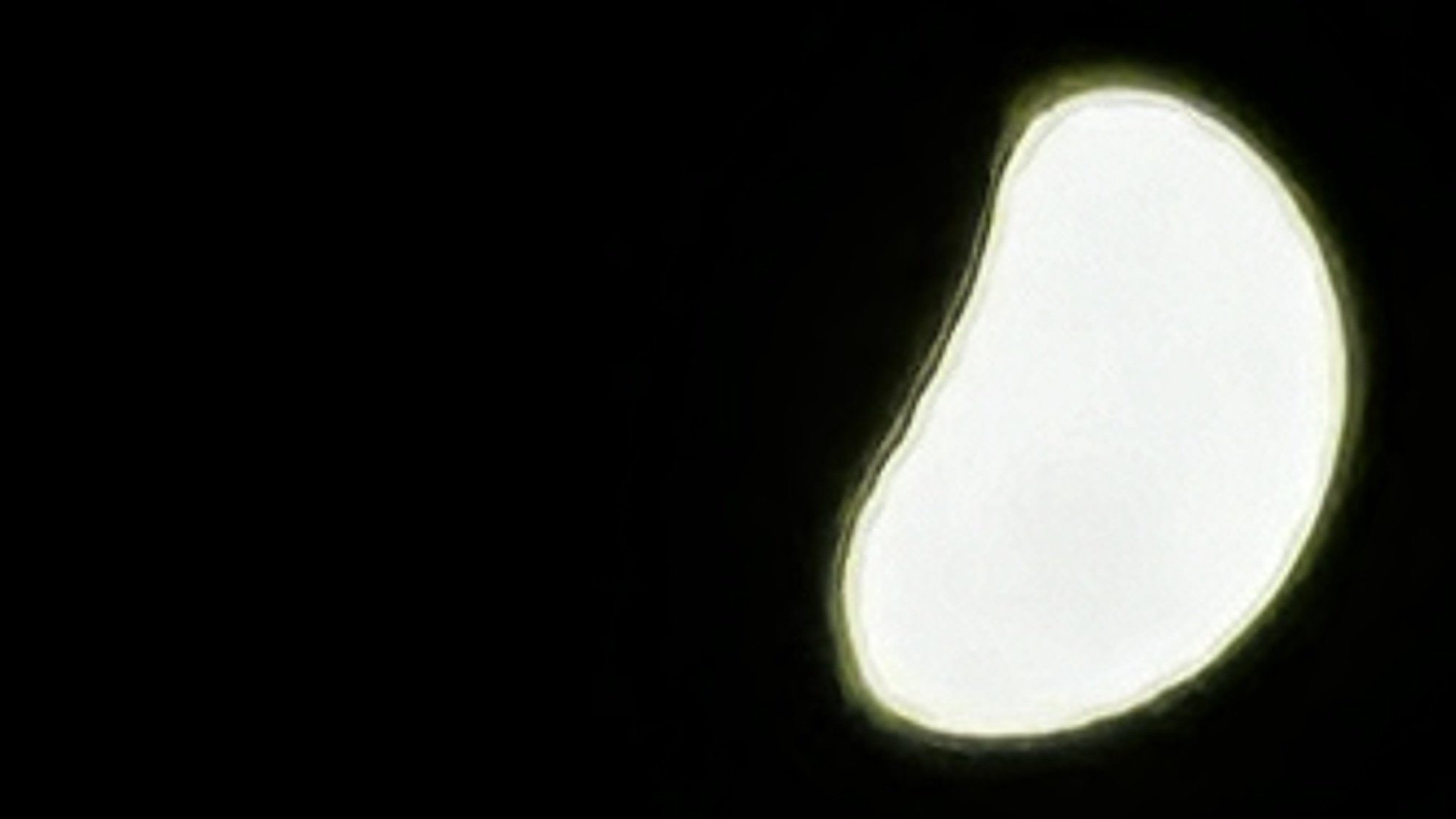
This phone is my favorite this year when it comes to delivering true-to-life, realistic photos with rich colors and textures, but it’s not the best at astrophotography (or perhaps it’s the least intuitive).
Even after cleaning the lenses, finding the optimal zoom setting, and dropping down the exposure, I still couldn’t get a sharp image of the moon. I zoomed in at 20.7x for this shot; the iPhone 15 Pro Max can climb to a max of 25x.
Here’s a screen recording of me snapping a photo of the moon with the iPhone 15 Pro Max.
I’m convinced this white kidney bean capture isn’t the best the iPhone 15 Pro Max can do. For a future article, I plan on playing with the settings more, beyond finagling with the zoom and ISO (e.g., experimenting with long exposure), to see if I can achieve astrophotography nirvana on this device.
iPhone 15 Pro Max quick camera specs:
Main camera: 48MP, f/1.8, 1.22µm
Telephoto (facilitates zooming in): 12MP, f/2,8, 1.12µm, 5x optical zoom
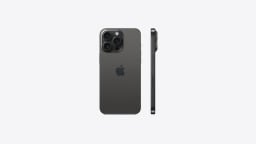
Samsung Galaxy S22 Ultra
Here’s my best take with the Samsung Galaxy S22 Ultra. It’s capable of 100x digital zoom, but 41x was the sweet spot for me.
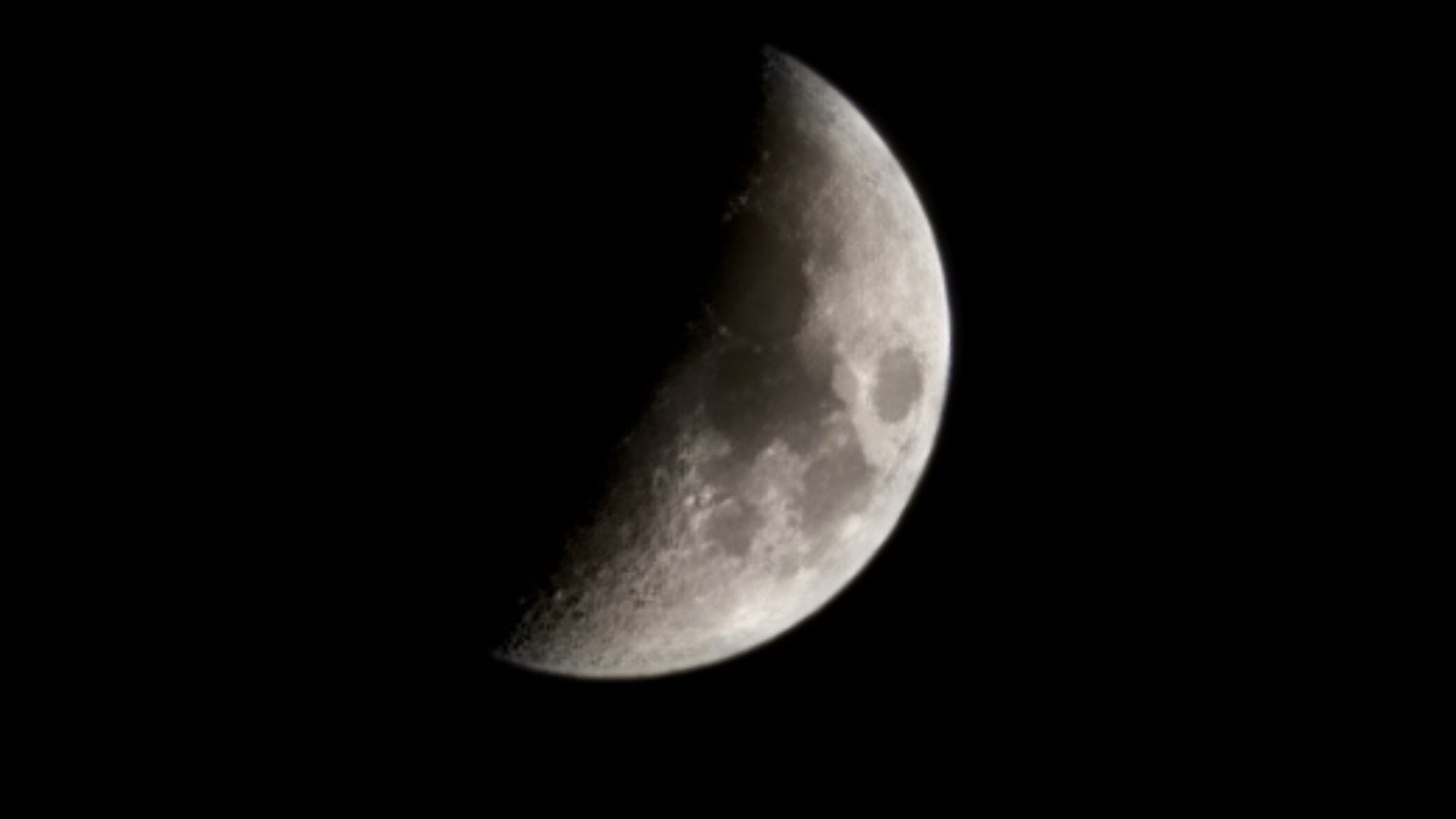
The Samsung phone did the best of the three, but I can’t help but feel a bit skeptical. Yes, you can see the the craters and other surface features with shocking clarity, but keep in mind that Samsung has been in hot water using AI trickery for moon shots.
People have questioned Samsung’s lunar astrophotography since it debuted the 100x “Space Zoom” feature in the Galaxy S20 Ultra in 2020. “Some have accused the company of simply copying and pasting pre-stored textures onto images of the Moon to produce its photographs,” The Verge said.
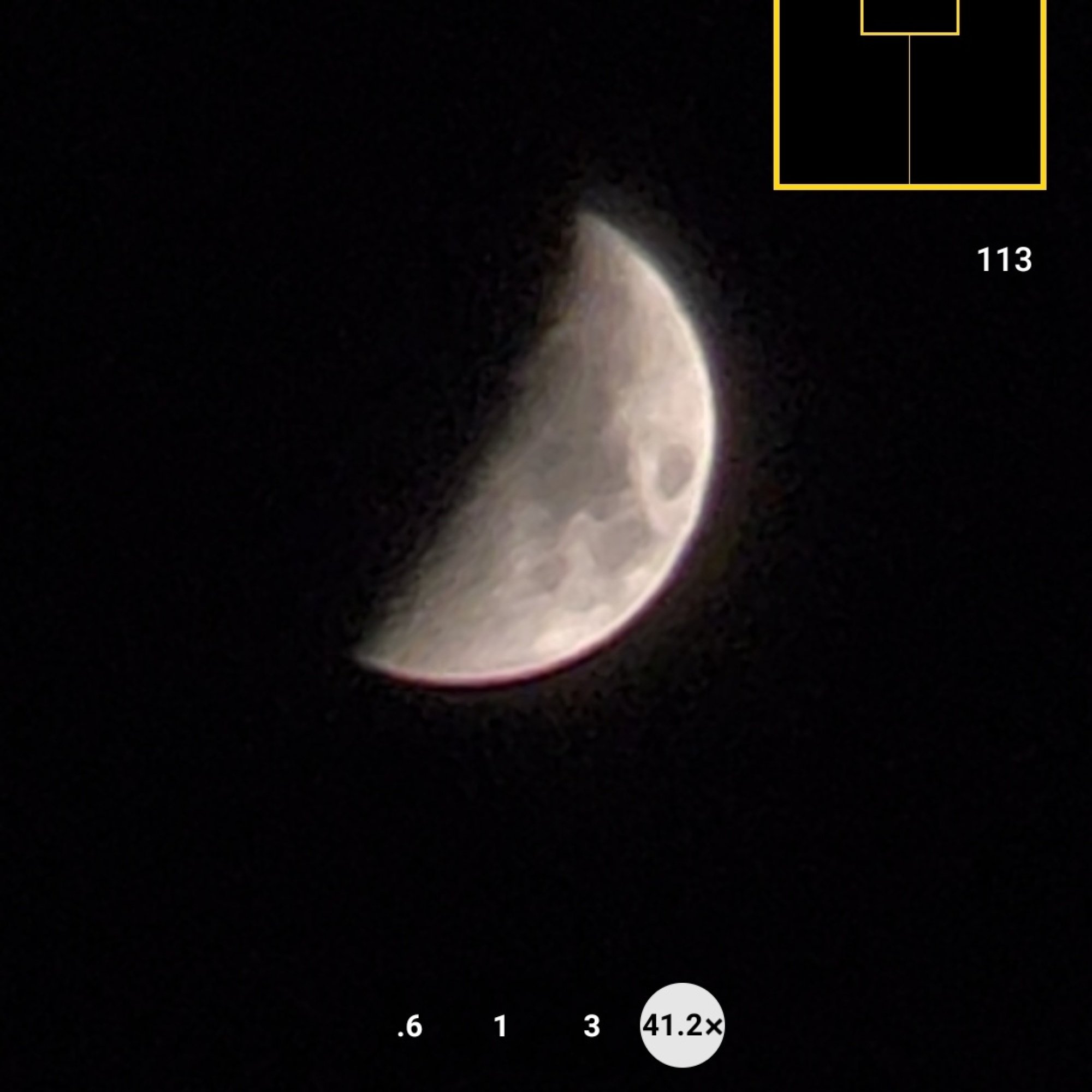
However, Samsung disputed these allegations. It told Input that it does not use image overlaying nor texture effects, but it does use AI to identify the moon’s presence and improve its details.
Samsung Galaxy S22 Ultra quick camera specs:
Main camera: 108MP, f/1.8, 0.8µm
Telephoto (facilitates zooming in): Telephoto 1: 10MP, f/4.9, 1.12µm, 10x optical zoom / Telephoto 2: 10MP, f/2.4, 1.12µm, 3x optical zoom
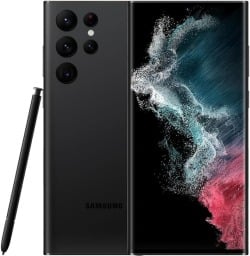
Final thoughts
If you don’t mind a little sprinkle of AI enhancing your moon shots, your best bet would be the Samsung Galaxy S22 Ultra (or perhaps the latest model, which is the Samsung Galaxy S23 Ultra).
The Pixel 8 Pro and iPhone 15 Pro Max were more challenging for me, but it’s only a matter of time before Google and Apple step it up in terms of intuitiveness and technological progress in the astrophotography space.
